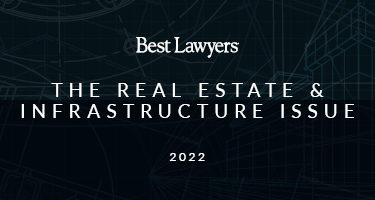The law of adverse possession is deeply rooted in the common law and its elements are generally well-known to practitioners. However, adverse possession rules, as applied to tenancies in common, are less often encountered by practitioners, and the statutory language itself can be
subject to misinterpretation without a careful review of the relevant case law. This article is intended to clarify the issues that often arise when one cotenant claims adverse possession of the entire property against his or her fellow cotenant. With regard to obtaining adverse possession as applied to tenancies in common, most states agree that adverse possession can be obtained after a disengaged tenancy in common but many of these states have their own timelines, and other requirements.
In Fini v.Martini, 164 AD3d 1218, 83 NYS3d 595 (2d Dept. 2018), the Appellate Division rejected defendant’s adverse possession counterclaim to property to which, in a partition action commenced in 2013, plaintiff claimed a present right of possession as the owner of an undivided share of business premises that both parties had purchased as tenants-in-common in 1970. The court held that “[e]ven assuming that the defendant had exclusive possession of the property after the plaintiff went on disability in 1994, the required 20-year statutory period had not elapsed when the defendant asserted his counterclaim for adverse possession in his answer on September 26, 2013.” (Emphasis added). This case highlights a statute of limitations issue in adverse possession law where no ouster has occurred, that courts have differed on in the past and of which real estate attorneys need to be aware.
In New York, the law of adverse possession is codified in Article 5 of the Real Property and Proceedings Law (RPAPL §§ 501, et seq.). It is deeply rooted in the common law, see, e.g., Walling v. Prysbylo, 7 NY3d 228 (2006), and its elements are generally well-known to practitioners. However, adverse possession rules, as applied to tenancies in common, under
RPAPL § 541, are less often encountered by practitioners, and the statutory language itself can be subject to misinterpretation without a careful review of the relevant case law. This article is intended to clarify the issues that often arise when one cotenant claims adverse possession of the entire property against his or her fellow cotenant when no ouster has taken place and how New York’s test for ouster compares to other, representative jurisdictions .
What is a Tenancy in Common?
In a tenancy-in-common, “[e]ach cotenant has an equal right to possess and enjoy all or any portion of the property as if the sole owner, and he can dispose of his interest during his. lifetime or at death by will or intestacy. The other tenants in common do not succeed to a deceased tenant’s share of the property by survivorship.” Turano, Practice Commentaries, McKinney’s Cons. Laws, Estates, Powers and Trusts Law (EPTL) §6-2.1 (Estates in severalty, joint tenancy, tenancy by the entirety and in common). See also Butler v. Rafferty, 100 NY2d 265 (2003). Non-possessory cotenants do not relinquish any of their rights as tenants-in-common when another cotenant assumes exclusive possession of the property.
The Relevant New York Statutory Provision
The law of adverse possession as applied to tenancies in common is governed by RPAPL § 541: Where the relation of tenants in common has existed, the occupancy of one tenant, personally or by his servant or by his tenant, is deemed to have been the possession of the other, notwithstanding that the tenant so occupying the premises has acquired another title or has claimed to hold adversely to the other. But this presumption shall cease after the expiration of ten years of continuous exclusive occupancy by such tenant, personally or by his servant or by his tenant, or immediately upon an ouster by one tenant of the other and such occupying tenant may then commence to hold adversely to his cotenant. (Emphasis added).
RPAPL § 541 alludes to the ten-year prescriptive period contained in CPLR §
212(a)(“Actions to be Commenced Within Ten Years, Possession Necessary to Recover Real Property”), as incorporated into RPAPL § 501(2)(“Adverse Possession; Defined, Acquisition of Title”). There is no dispute that, in order for a person to acquire title to real property by adverse possession, under RPAPL § 501(2), the person’s occupancy of the property must have been “adverse, under claim of right, open and notorious, continuous, exclusive, and actual” for the full ten-year prescriptive period. However, the question that has often arisen under RPAPL § 541 is when does the ten-year prescriptive period begin in order for one cotenant in common to adversely possess against another cotenant in common?
The language of RPAPL § 541 suggests that there are three possible ways of construing when the ten-year prescriptive period begins: (a) upon the immediate occupancy of the property by one cotenant to the exclusion of the other cotenant from the very beginning of their cotenancies in common; (b) only after the passage of ten years of exclusive occupancy by one cotenant; or (c) immediately upon the ouster of one cotenant from occupancy of the property by the other cotenant.
Despite some contrary rulings, see, e.g., Kraker v. Roll, 100 AD2d 424, 474 NYS2d 527 (2d Dept. 1984)(holding that the statutory presumption “may be rebutted and adverse possession shown”), citing Tarbox v. Hulett, 272 AD 633, 75 NYS2d 37 (3d Dept. 1947), case law generally, over the years, had declined to hold that a co-tenant in exclusive occupancy can begin immediately to adversely possess the property from the very inception of the parties’ cotenancies. See, e.g., Perkins v. Volpe, 146 AD2d 617, 536 NYS2d 845 (2d Dept. 1989); Perez v. Perez, 228 AD2d 161, 162, 644 NYS2d 168, 169-170 (1st Dept. 1996). Courts holding to this view had consistently interpreted RPAPL § 541 to mean that, despite one cotenant’s exclusive occupancy, there is a twenty-year statutory period that must pass before that cotenant may acquire title to the entire property by adverse possession; i.e., a ten-year “presumptive” period of co-tenancy followed by a ten-year period of that cotenant’s open and notorious adverse occupancy.
This view was premised upon the statutory language specifying that “the occupancy of one tenant, . . . , is deemed to have been the possession of the other, notwithstanding that the tenant so occupying the premises has acquired another title or has claimed to hold adversely to the other.”
Nevertheless, scholarly commentary (Meehan, Practice Commentaries, McKinney’s Cons. Laws of N.Y., Book 49½, RPAPL 541, 1998 Cum. Ann. Pocket Part, at 37) described
RPAPL § 541 as an “unclear statute” that required an answer from the Court of Appeals to the “long standing question” whether 10 or 20 years is required for a cotenant to acquire title by adverse possession.
Responding to this scholarly invitation, , in Myers v. Bartholomew, supra, the Court of Appeals, held squarely that “absent ouster, the period required by RPAPL § 541 is 20 years of continuous exclusive possession before a cotenant may be said to acquire full title by adverse possession.” The Court of Appeals recognized the need for an authoritative construction of RPAPL § 541, stating:
Although RPAPL 541 was intended to inject clarity into the common law by
creating a firm statutory period after which the presumption of nonadverse
possession would terminate, the statute has for many years divided courts and fueled debate among legal scholars. The primary complaint is that section 541 does not plainly indicate when the presumption of nonadverse possession ceases and the adverse possession period begins to run.
The Court noted and addressed the views of those courts that supported a 10-year period and those that supported a 20-year period: Some argue that the 10-year presumption specified in section 541 can be rebutted with a factual showing of adverse possession. Under this view, a cotenant’s 10- year period of exclusive possession runs concurrently with the 10-year Statute of Limitations period applicable to adverse possession claims. [citing, e.g., Article Ten Properties Ltd. v. Kocak, 164 AD2d 448, 564 NYS2d 558 (3d Dept. 1990)]
Continuing:
Others contend that the presumption is irrebuttable; unless there is an ouster, a cotenant’s exclusive possession can be considered adverse only after the cotenant has been in exclusive possession for 10 years. Under this view, RPAPL 541
requires a cotenant to possess exclusively for two consecutive 10-year periods, or 20 years before asserting a claim of adverse possession. [citing, among others, Perez v. Perez, supra.]
And concluding:
Given the language of the statute, particularly when read in light of its history, we conclude that the latter interpretation of RPAPL 541 is the right one. Absent an ouster, a cotenant may begin to hold adversely only after 10 years of exclusive possession. RPAPL 541’s statutory presumption, therefore, effectively requires 20 years — or two consecutive 10-year periods — of exclusive possession before a cotenant may be said to have adversely possessed a property owned by tenants-incommon.
Because RPAPL 541 also addressed the period of repose when an ouster has occurred, it is useful to examine when ouster can be implied in New York and whether New York’s case-law is consistent with other jurisdictions throughout the United States
When can an “Ouster” be implied?
As previously noted, RPAPL § 541 provides that the presumption prescribed therein shall cease not only “after the expiration of ten years of continuous exclusive occupancy” by one cotenant, but also “immediately upon an ouster by one tenant of the other and such occupying tenant may then commence to hold adversely to his cotenant.”
Myers explained that “determining when there has been an implied ouster can be a vexing task because cotenants have every right to use the property and any possession, even if exclusive, is presumed to be for all the tenants-in-common. Indeed, the question of when a court should imply an ouster is not easily resolved under the common law.”
Indeed, the case law in the Appellate Divisions have made it very clear over the years that a cotenant claiming adverse possession by ouster of his or her cotenants has a heavy burden. Whether or not an ouster is found is greatly dependent upon the facts of each case
Exclusive possession by a cotenant, alone “is not the equivalent of an ouster, nor, for that matter, does it conclusively establish adverse possession. Adverse possession requires ‘very obvious and overt acts which unmistakably repudiate a nonpossessory owner’s right by one possessing the property.’” Perez v. Perez, 228 A.D.2d 161, 162, 644 N.Y.S.2d 168, 169. (1st Dep’t 1996). (Held: paying mortgage and taxes or maintenance expenses, and providing for upkeep of the property, did not constitute acts sufficient to establish a claim of right for purposes of adverse possession as against a cotenant.) See also Russo Realty Corp. v. Orlando, 819 N.Y.S.2d 265, 267 (2d Dep’t. 2006).
“[A]n ouster will not be deemed to have occurred unless the possessory cotenant, either through words or actions, unequivocally expresses to the nonpossessory cotenant that the property is being adversely possessed.” Lindine v. Iasenza, 130 AD3d 1329, 1330, 15 NYS3d 248, 250 (3d Dep’t. 2015). (Held: statements plaintiff cotenants claimed to have made to the defendant cotenants that he and his wife “regarded the property as their home and that they would remain there indefinitely . . . . prove little more than exclusive use of the property by [plaintiff cotenants] that did not rise to the level of an ouster.”)
In Loveless Family Tr. v. Koenig, 77 A.D.3d 1447, 1449, 909 N.Y.S.2d 254, 256 (4th Dep’t 2010), the Court held that there was no merit to the contention that defendant ousted plaintiffs after the creation of a trust. Defendant’s daughter acknowledged that rent was paid both to defendant and the Trust, and the record reflected (a) that the Trust received rental income tax forms concerning the property in 1999 and from 2001 through 2004, and (b) defendant testified that he refused to discuss matters related to the property with the trustees, because he was “too busy,” not because he was attempting to oust them.
In Perkins v. Volpe, 146 A.D.2d 617, 617, 536 N.Y.S.2d 845, 846 (2d Dep’t 1989), the Court held that, in the plaintiff’s absence, defendant changing the locks of the house was not sufficient to create an “ouster” where the defendant claimed at trial that he did so in an effort to deny the plaintiff entry, but had stated at his examination before trial that he changed the locks for security reasons having nothing to do with the plaintiff, and where he also testified that he never interfered with the plaintiff’s right to possess the property nor had ever communicated to her his claim of sole ownership.
In Bank of America, N.A. v. 414 Midland Ave. Assocs., LLC, 78 A.D.3d 746, 911 N.Y.S.2d 157 (2d Dep’t 2010), the “[m]ere recording of deed by possessing cotenant did not constitute ouster of non-possessing cotenant, such as would trigger limitations period for action to recover real property or its possession, absent change in possession of the property.”
However, in Pravato v. M.E.F. Builders, Inc., 217 A.D.2d 654, 655, 629 N.Y.S.2d 796, 798 (2d Dep’t 1995), the Court held that the presumption of RPAPL §541 ceased, and the Statute of Limitations for adverse possession began to run, when one cotenant in exclusive possession of the property sold the property and thereby ousted his out-of-possession cotenant from the property upon the sale. Fortunately for the cotenant, she learned of the sale and commenced her action, seeking an order declaring her the owner of an undivided one-half interest in the property, within the ten-year prescriptive period. The Court held that her action was timely commenced, and her motion for summary judgment was granted.
It is clear from the case law that ouster may be implied only “in cases where the acts of the possessing cotenant are so openly hostile that the non-possessing cotenants can be presumed to know that the property is being adversely possessed against them.” Fini v. Marini, supra, 83 NYS3d at 1220. Other jurisdictions set the same high bar.
Representative Jurisdictions
In O’Connor v. Laroque, 302 Conn. 562, 581-582 (2011) the Supreme Court of
Connecticut set forth that State’s test for adverse possession, namely, that “the claimant must oust an owner of possession and keep such owner out without interruption for fifteen years by an open, visible and exclusive possession under a claim of right with intent to use the property as his own and without the consent of the owner …” (citation omitted), but added that the burden of proof for a cotenant claiming adverse possession is significantly greater. The court explained that because possession by one cotenant “is ordinarily considered to be possession by all and not adverse to any cotenant” (citations omitted), there is “a presumption against adverse possession” which , although it “may be overcome in certain circumstances, it is not easily done.” There must be proof of “an ouster and exclusive possession so openly and notoriously hostile that the cotenant will have notice of the adverse claim (citation omitted) (emphasis in original). In other words, the actions must be so unmistakable “that the intention to disseize is clear and unmistakable.” (citation and internal quotation marks omitted)
Virginia courts express this principle in a somewhat different manner. In Harkleroad v. Linkous, 281 Va. 12, 18 (2011) for instance, the court set forth the usual elements necessary to establish adverse possession: “actual, hostile, exclusive, visible, and continuous possession under a claim of right, for a statutory period of 15 years.” But the Court went on to add that in the case of cotenants, where there is a “presumption against any occupancy of a cotenant being hostile possession as to other cotenants when he is in privity” (citation omitted) ouster must be shown. The Court explained, that for a cotenant to establish adverse possession, “notice, actual or constructive [must be] given to the other cotenant of the intent to oust…”. Such notice would make occupying cotenant’s possession hostile.
The State of Georgia provides an even more stringent test. In Williams v. Screven Wood Co., 279 Ga. 609, 610 (2005), the court instructed that the movant must not only satisfy the usual elements for prescription but must additionally satisfy one of the elements of OCGA § 44- 6-123. This statute provides that “[t]here may be no adverse possession against a cotenant until the adverse possessor effects an actual ouster, retains exclusive possession after demand, or gives his cotenant express notice of adverse possession.” Addressing the ouster element, the court explained that a “tenant in possession must show acts inconsistent with, and exclusive of, the rights of the cotenant not in possession, and the cotenant must have actual or constructive knowledge of those acts.”
Alabama is similar. In Lynn v. Kelley, 974 So. 2d 309, 311 (2007), the Alabama Court of Appeals explained that adverse possession could be established by statute or prescription. The latter requires a demonstration of the usual elements, namely, actual, exclusive, open, notorious and hostile possession under a claim of right for twenty years. But a cotenant must additionally establish how his possession became adverse. Thus, the court noted that possession will not be deemed to be adverse until the other cotenant “is actually ousted, the adverse character of the possession of the claiming tenant is actually known to the cotenant, or the possession of the claiming tenant is so open and notorious in its hostility and exclusiveness as to put the cotenant on notice of its adverse character.” (citation omitted)
Conclusion
Regardless of jurisdiction, cotenancies are often created in connection with the settlement among family members of a decedent’s estate. In such instances, it is not uncommon for one family member to retain exclusive possession of the real property that passes in undivided interests to two or more of the surviving members as cotenants. The case law shows that the proper interpretation of the relevant statute is extremely important to resolving ownership disputes among the cotenants that may arise many years after the creation of their cotenancies. It is therefore advisable that real estate attorneys be aware of these statutes, how it deals with the statute of limitations when no ouster is present, and where it is, the interpretative case law to establish a claim of ouster.
- Adam Leitman Bailey is the founding partner of Adam Leitman Bailey, P.C., and John M. Desiderio is a partner of the firm’s Real Estate Litigation Group


























